How Long Do Potatoes Last?
Here’s all about the shelf life of potatoes. Learn how long potatoes last, how long they can sit cooked in the fridge, and when to toss them.
Got a bag of potatoes stored away in the pantry for more than a week and wondering how long they will stay good for? How long do potatoes last?
Or maybe you’ve got some leftover mashed or baked potatoes, and you need to know how long they can sit in the fridge.
If that sounds familiar, this article is for you. Read on.
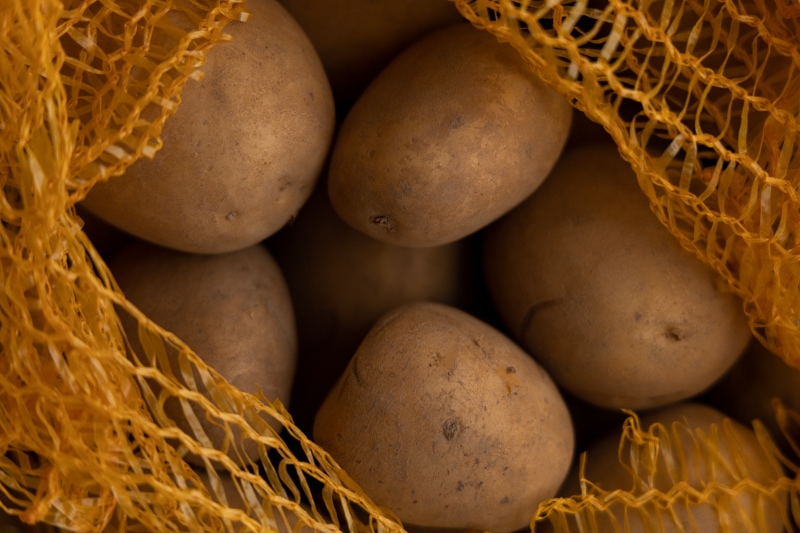
How Long Do Potatoes Last?
| Room Temperature | Pantry | Fridge | |
|---|---|---|---|
| Potatoes (raw) | 1 – 2 weeks | 1 month | 3 – 4 weeks, but the taste will change |
| Potatoes (cooked) | 3 – 4 days |
Raw potatoes last for about 2 weeks at room temperature or for about a month if you store them in a cold pantry. You can also refrigerate raw potatoes for about a month, but that will usually make them much sweeter and therefore isn’t recommended.
The optimal storage temperature for potatoes is between 45˚F to 50˚F (or 7˚C to 10˚C) and stored in such conditions, potatoes will keep for up to two months or even more.
The only issue with that is hardly anyone has access to a storage spot that maintains a similar temperature. That’s when leaving potatoes at room temperature or storing them in the pantry comes in.
Either is less than ideal but still better than refrigeration.
Of course, the mentioned storage periods are only rough estimates, and many more factors are involved. Some of them include the following:
- how tightly the potatoes are stored
- if there are any rotten or moldy potatoes in the bunch (one bad potato can spoil a bunch quite quickly)
- storage temperature and overall conditions
- how long were they on display in the supermarket
- and so on
For more on proper storage practices, read the storage section.
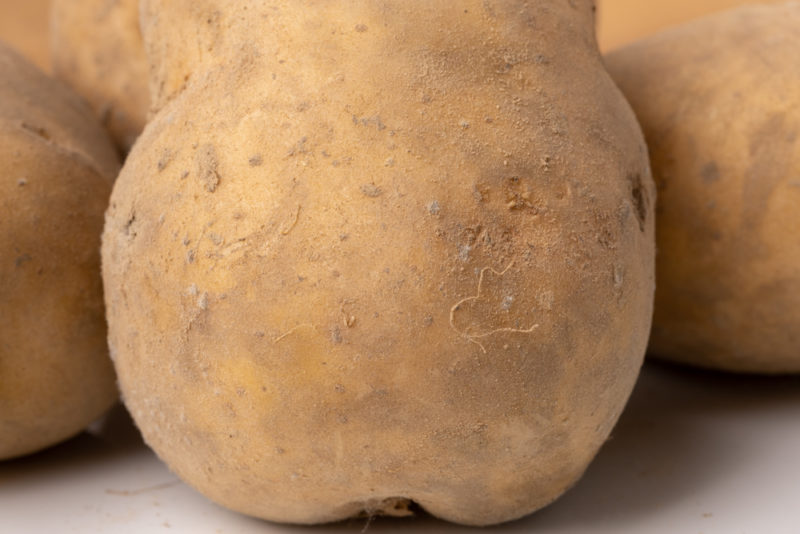
Cooked Potatoes
Cooked potatoes last for 3 to 4 days sealed tightly in the fridge. After you cooked or baked your potatoes, let them cool at room temperature, then transfer them to an airtight container or a lidded pot and refrigerate.
Make sure the cooldown period isn’t longer than two hours, as that’s approximately how long cooked potatoes last unrefrigerated before they become unsafe to eat.
(That period is also known as the 2-hour rule, which you might’ve heard about.)
The 3 to 4 days period also applies to any dish with cooked potatoes, so that’s also how long potato salad lasts.
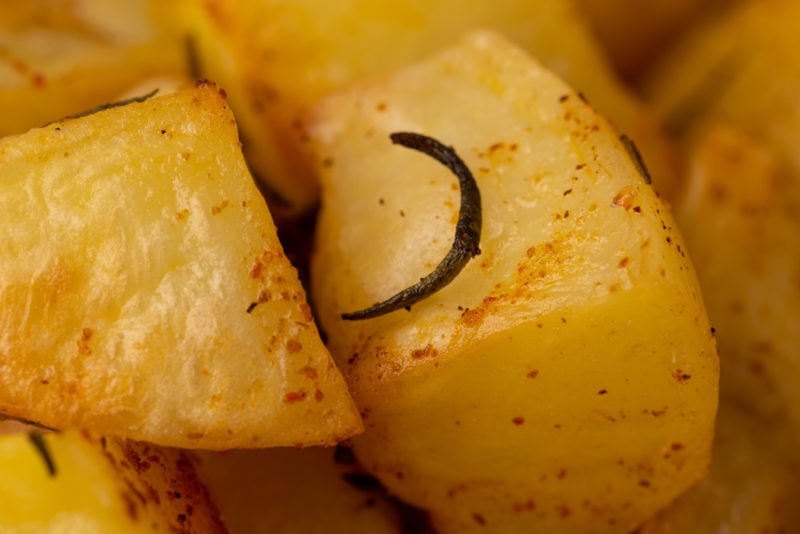
How To Tell If Potatoes Are Bad?
Main article: How to tell if a potato is bad?
Discard a potato that:
- Is soft, wrinkled, or shriveled. All three indicate moisture loss and are the most common reason you’ll throw out potatoes. Of course, a couple of wrinkles are okay, and so is using a potato that’s not perfectly firm. It’s up to you, at which point you find the quality of the root veggie too bad to use.
- Has large dark spots, bruises, or is moldy. Bruised and moldy potatoes go bad quickly, and often other potatoes in the bunch get infected too. Like in the case of most other veggies, your can cut out the spoiled part if it’s relatively small, but if that would mean removing half of the spud, toss the whole thing. When cutting away the bad area, cleave some margin to stay safe.
- Smells off. If a potato gives off a strong, musty smell, it’s no good. Visual signs of spoilage mentioned above usually accompany the “funny” smell, so it’s not that difficult to pinpoint the spoiled potato or two from the smelly bunch.
Those are the typical signs of spoiled potatoes.
Now, there are a few other signs that make people concerned, but are totally okay.
The first one is sprouting.
Using sprouting potatoes is okay, and so is using sprouting sweet potatoes or sprouting onions. You just cut off the sprouts, cook the potatoes, and eat them as usual.
The second one is green spots.
Greening is caused by too much light exposure, and you should cut off the green areas before cooking the potatoes. Eating some green potatoes is okay, but eating too much of them might result in illness.
As long as you trim off the greening surface area, there’s nothing to worry about.
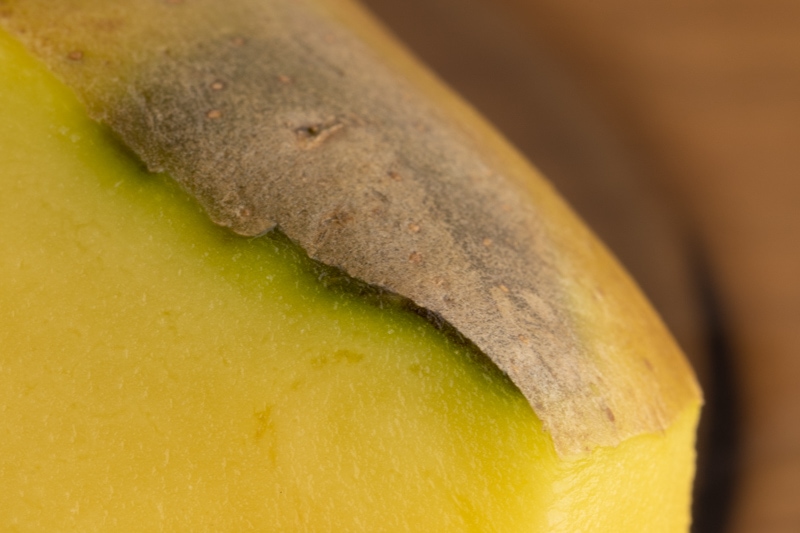
The last is a hollow heart – a discolored hole inside a healthy potato.
Potatoes with that hole are perfectly fine, but if you notice the whole while cutting the potatoes into halves or quarters, it’s best to cut it off for appearance’s sake.
If you notice anything else that’s suspicious, trust your gut and toss the potato. Better safe than sorry.
How to Store Potatoes
When you come home with the potatoes, don’t wash them before putting them into storage. If they’re too dirty, you can brush them, but don’t use any water. That will only make them go bad sooner.
When it comes to storage, the best temperature for potatoes is approximately 7˚C to 10˚C or 45˚F to 50˚F. That means that the fridge is too cold, and room temperature is too warm. So unless you happen to have an unheated basement or another place that maintains such temperature, you need to choose one of the imperfect options.
Let’s start with storing spuds at room temperature. As I already mentioned, it’s not ideal, but it’s not bad either. A couple of things to remember here is to make sure they sit out of light and in a well-ventilated place.
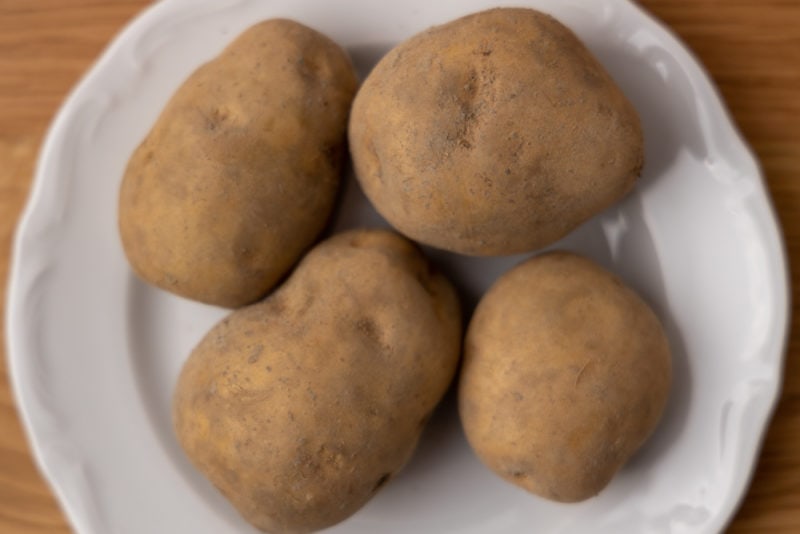
If you’ve brought them in a plastic bag, cut some holes here and there to let the veggies breathe. Otherwise, a mesh bag or a basket with some holes works great too.
If you store potatoes in a relatively warm (think room temperature) place, at some point, they will start to sprout. That’s okay, and it’s not a sign of the potatoes going bad.
All you need to do is to cut off the sprouts before cooking, and you’re good to go. The same applies to sweet potatoes.
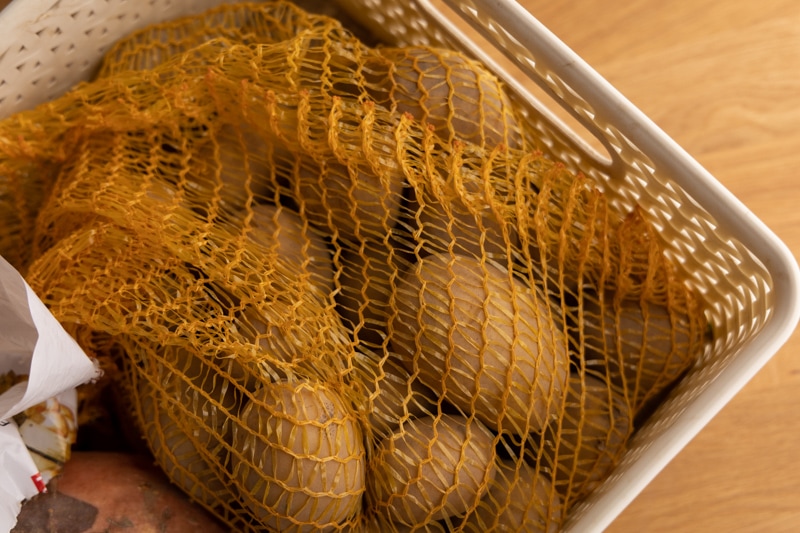
Refrigerating Potatoes
The issue with storing potatoes in the refrigerator is that cold temperature causes the starch in the potato to turn into sugar. And that, as you might imagine, causes the potatoes to become somewhat sweet. Because of that, in many places online you can read that you should never store potatoes in the fridge.
If you live in a hot climate and the potatoes don’t last too long in the pantry, you can try storing some in the fridge to see how they turn out. Maybe you won’t find them that bad.
Refrigerated potatoes tend to change color when cooked. To reduce that effect, you can take them out of the fridge an hour before cooking, so they warm up to room temperature.
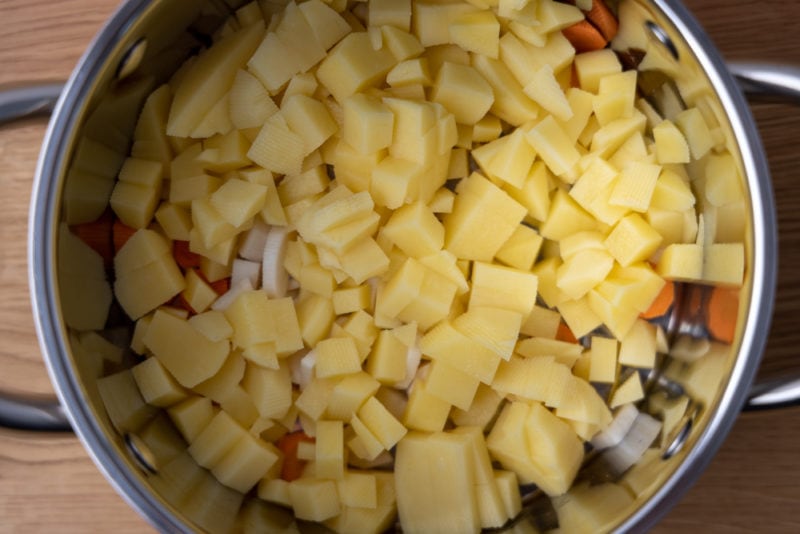
No matter if you store potatoes at room temperature or in the fridge, make sure to check on them once a week and remove the bad ones.
All in all, storing raw potatoes in the pantry is the way to go for most of us. Avoid refrigerating them unless you have to.
When it comes to cooked potatoes, they go into the fridge, in an airtight container.
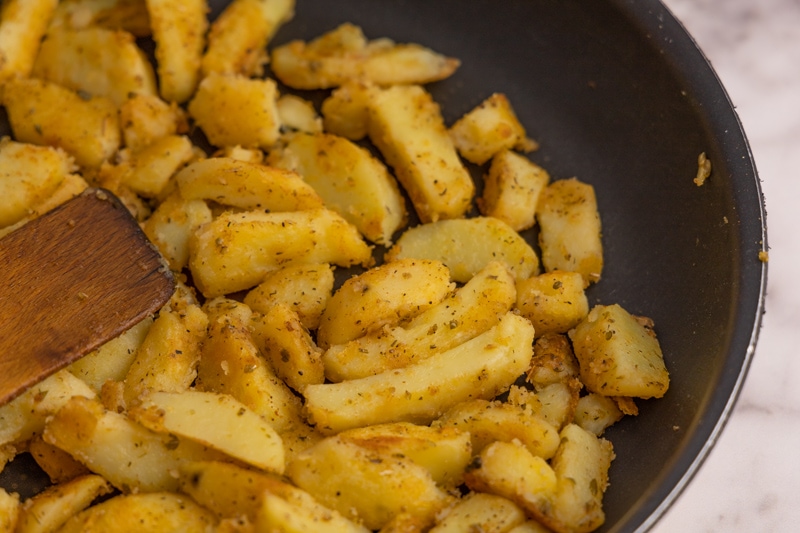
Potatoes Shelf Life Summary
Thank you for reading this short guide on condensed milk. Let’s briefly recap what we’ve covered above:
- How long do potatoes last? Raw potatoes last about 2 weeks at room temperature or up to a month in a cold pantry. If you store them at 45˚F to 50˚F and high relative humidity, they can last for two months or even more.
- How long do cooked potatoes last? Cooked potatoes keep for 3 to 4 days, sealed tightly and refrigerated. After cooking, let them cool to about room temperature, seal them using a container or lidded pot, and put them in the fridge.
Rotten Records: Share Your Snap!
Caught some food past its prime? Upload your photo to “Rotten Records” and help others spot the signs of spoilage. Every image makes our food community safer and more informed!
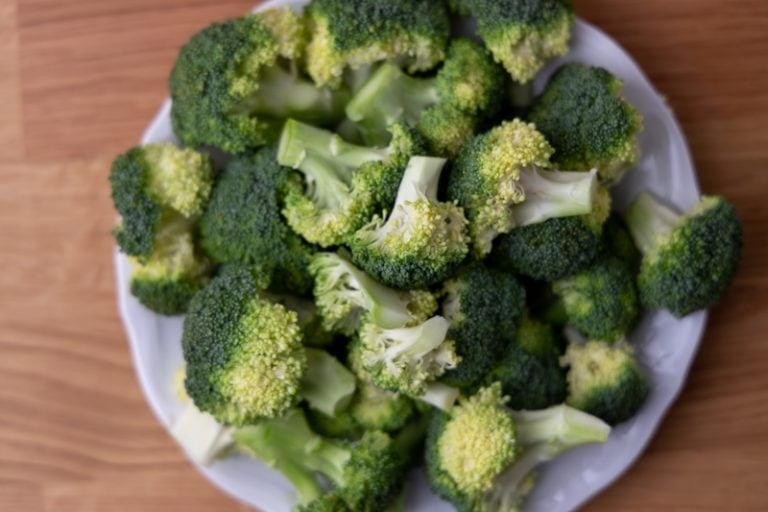
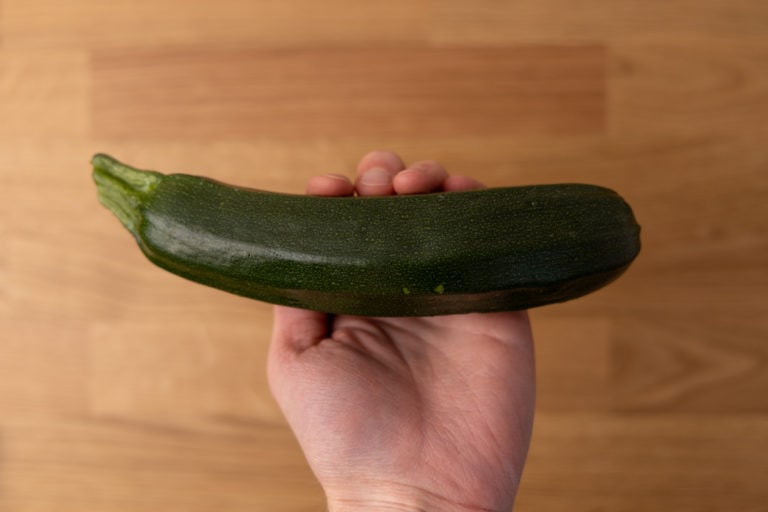
![How to Tell if Kale Is Bad? [4 Spoilage Signs]](https://www.doesitgobad.com/wp-content/uploads/kale-spoilage-signs-infographic-1-768x512.jpg)
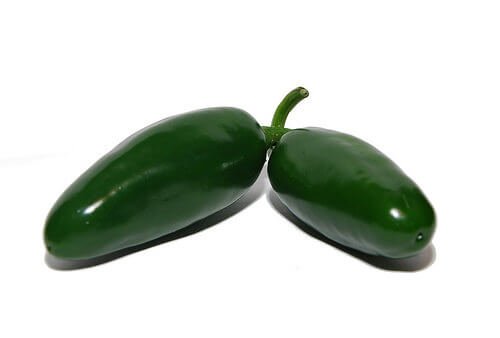
![How to Store Eggplant? [Whole, Cut, and Cooked]](https://www.doesitgobad.com/wp-content/uploads/Three-eggplants-768x512.jpg)